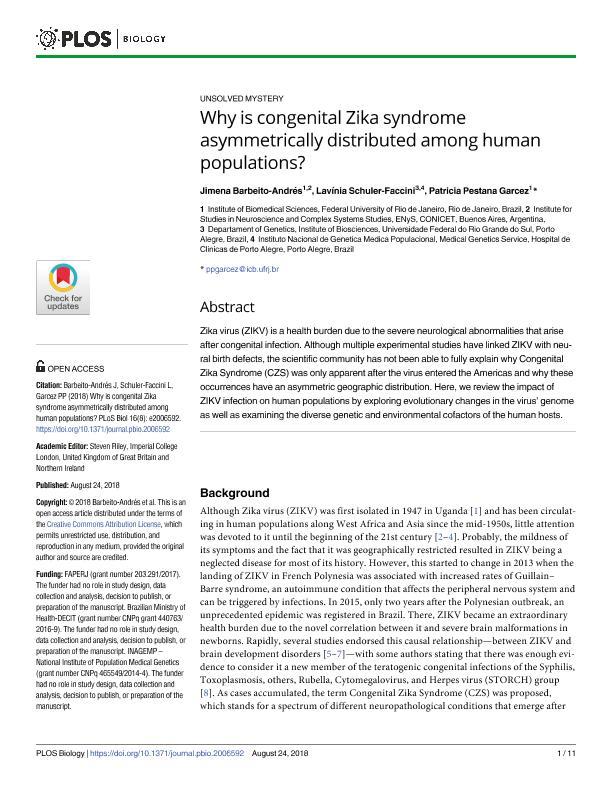Artículo
Why is congenital Zika syndrome asymmetrically distributed among human populations?
Fecha de publicación:
08/2018
Editorial:
Public Library of Science
Revista:
PLoS Biology
ISSN:
1544-9173
Idioma:
Inglés
Tipo de recurso:
Artículo publicado
Clasificación temática:
Resumen
Zika virus (ZIKV) is a health burden due to the severe neurological abnormalities that arise after congenital infection. Although multiple experimental studies have linked ZIKV with neural birth defects, the scientific community has not been able to fully explain why Congenital Zika Syndrome (CZS) was only apparent after the virus entered the Americas and why these occurrences have an asymmetric geographic distribution. Here, we review the impact of ZIKV infection on human populations by exploring evolutionary changes in the virus’ genome as well as examining the diverse genetic and environmental cofactors of the human hosts.
Palabras clave:
BRAIN
,
DEVELOPMENT
,
STORCH
Archivos asociados
Licencia
Identificadores
Colecciones
Articulos(ENYS)
Articulos de UNIDAD EJECUTORA DE ESTUDIOS EN NEUROCIENCIAS Y SISTEMAS COMPLEJOS
Articulos de UNIDAD EJECUTORA DE ESTUDIOS EN NEUROCIENCIAS Y SISTEMAS COMPLEJOS
Citación
Barbeito Andrés, Jimena; Schuler Faccini, Lavínia; Garcez, Patricia Pestana; Why is congenital Zika syndrome asymmetrically distributed among human populations?; Public Library of Science; PLoS Biology; 16; 8; 8-2018; 1-11
Compartir
Altmétricas




